Corrosion Prediction with Parallel Finite Element Modeling for Coupled Hygro-Chemo Transport into Concrete under Chloride-Rich Environment
Abstract
:1. Introduction
2. Basic Diffusion Formulation of Unsaturated Concrete
2.1. Governing Equation
- : total chloride concentration (in gram of free chloride per gram of concrete, g/g);
- : water content;
- : chloride binding capacity; and
- : moisture binding capacity.
2.2. Material Parameters
2.2.1. Moisture Capacity
2.2.2. Chloride Binding Capacity
2.2.3. Humidity Diffusion Coefficient
2.2.4. Chloride Diffusion Coefficient
- and = reference and current temperatures in Kelvin, T0 = 296 K;
- R = gas constant, 8.314 J/mol·K; and
3. Finite Element Formulation
4. Implementation of Parallel Finite Element Method
4.1. Various Programs Adapted in Parallel Finite Element Program
4.2. Overlapping Domain Decomposition Method with Additive Schwarz Preconditioner
5. Numerical Results
5.1. Applied Bridge Overview
5.2. Parallel Finite Method of Large-Scale Concrete Structure
5.2.1. Modeling of Castle Wood Canyon Bridge with Large Meshes
5.2.2. Environmental Humidity Model
5.2.3. Speed-Up for Parallel Algorithm
5.2.4. Effect of Boundary Condition
6. Conclusions
- (1)
- The parallel finite element program was developed based on the robust mathematical material model. The program can be used to simulate the coupled moisture and chloride penetration into non-saturated concrete structures. Chloride ion is one of sources causing the steel corrosion in reinforced concrete structures. The material parameters related to chloride and moisture diffusion in concrete are taken into account. These parameters include chloride and moisture diffusion coefficients, moisture capacity, chloride binding capacity, and the coupling parameters reflecting the coupling effects between moisture and chloride transfer in concrete.
- (2)
- For the implementation of parallel FE analysis, Triangle for mesh generation, ParMetis, PETSc, and MPI are employed. This program also used the overlapping domain decomposition method with additive Schwarz preconditioner. As the result of simulation, the computation time decreased until the number of processors became optimized when the number of processors increased. Then, the computational time increased because the communication between the processors increased.
- (3)
- The present model can be used to simulate the unsaturated concrete structures subjected to other aggressive chemicals from de-icing salt. The framework of present model can be extended to simulate the multi-species de-icing salts ingress into non-saturated concrete structures in future work.
Acknowledgments
Author Contributions
Conflicts of Interest
References
- Ali, H.A. Numerical simulation of chloride diffusion in RC structures and the implications of chloride binding capacities and concrete mix. IJCEE 2010, 10, 22–35. [Google Scholar]
- Masi, M.; Colella, D.; Radaelli, G.; Bertolini, L. Simulation of chloride penetration in cement-based materials. Cem. Concr. Res. 1997, 27, 1591–1601. [Google Scholar] [CrossRef]
- Conciatori, D.; Sadouki, H.; Bruhwiler, E. Capillary suction and diffusion model for chloride ingress into concrete. Cem. Concr. Res. 2008, 38, 1401–1408. [Google Scholar] [CrossRef]
- Conciatori, D.; Laferriere, F.; Bruhwiler, E. Comprehensive modeling of chloride ion and water ingress into concrete considering thermal and carbonation state for real climate. Cem. Concr. Res. 2010, 40, 109–118. [Google Scholar] [CrossRef]
- Isgor, O.B.; Razaqpur, A.G. Finite element modelling of coupled heat transfer, moisture transport and carbonation processes in concrete structures. Cem. Concr. Compos. 2004, 26, 57–73. [Google Scholar] [CrossRef]
- Lin, G.; Liu, Y.H.; Xiang, Z.H. Numerical modeling for predicting service life of reinforced concrete structures exposed to chloride environments. Cem. Concr. Compos. 2010, 32, 571–579. [Google Scholar] [CrossRef]
- Chernin, L.; Val, D.V.; Stewart, M.G. Prediction of cover crack propagation in RC structures caused by corrosion. Mag. Concr. Res. 2012, 64, 95–111. [Google Scholar] [CrossRef]
- Zhang, J.; Ling, X.; Guan, Z. Finite element modeling of concrete cover crack propagation due to non-uniform corrosion of reinforcement. Constr. Build. Mater. 2017, 132, 487–499. [Google Scholar] [CrossRef]
- Lim, S.; Akiyama, M.; Frangopol, D.M. Assessment of the structural performance of corrosion-affected RC members based on experimental study and probabilistic modeling. Eng. Struct. 2016, 127, 189–205. [Google Scholar] [CrossRef]
- Šomodíková, M.; Lehký, D.; Doležel, J.; Novák, D. Modeling of degradation processes in concrete: Probabilistic lifetime and load-bearing capacity assessment of existing reinforced concrete bridges. Eng. Struct. 2016, 119, 49–60. [Google Scholar] [CrossRef]
- Hu, N.; Burgueño, R.; Haider, S.W.; Sun, Y. Framework for Estimating Bridge-Deck Chloride-Induced Degradation from Local Modeling to Global Asset Assessment. J. Bridge Eng. 2016, 21, 06016005. [Google Scholar] [CrossRef]
- Tang, L.; Nilson, L.O. Prediction of Chloride Penetration into Concrete by Using the Computer Program CLINCON, Proceedings of the Second International Conference on Concrete under Severe Conditions 2-Environment and Loading, Tromsø, Norway, 21–24 June 1998; Gjørv, O.E., Sakai, K., Banthia, N., Eds.; E & FN Spon: New York, NY, USA, 1998; pp. 625–634. [Google Scholar]
- Bazant, Z.P.; Xi, Y. Stochastic Drying and Creep Effects in concrete structures. J. Struct. Eng. 1993, 119, 301–322. [Google Scholar] [CrossRef]
- Xi, Y.; Bazant, Z.P. Modeling chloride penetration in saturated concrete. J. Mater. Civ. Eng. 1999, 11, 58–64. [Google Scholar] [CrossRef]
- Suwito, A.; Cai, X.; Xi, Y. Parallel finite element method for coupled chloride moisture diffusion in concrete. Int. Numer. Anal. Model. 2006, 3, 481–503. [Google Scholar]
- Ababneh, A.; Benboudjema, F.; Xi, Y. Chloride penetration in Nonsaturated concrete. J. Mater. Civ. Eng. 2003, 15, 183–191. [Google Scholar] [CrossRef]
- Xi, Y.; Willam, K.; Frangopol, D.M. Multiscale modeling of interactive diffusion processes in concrete. J. Eng. Mech. 2000, 126, 258–265. [Google Scholar] [CrossRef]
- Xi, Y.; Bazant, Z.P.; Molina, L.; Jennings, H.M. Moisture diffusion in cementitious materials: Adsorption isotherm. Adv. Cem. Based Mater. 1994, 1, 248–257. [Google Scholar] [CrossRef]
- Xi, Y.; Bazant, Z.P.; Molina, L.; Jennings, H.M. Moisture diffusion in cementitious materials: Moisture capacity and diffusivity. Adv. Cem. Based Mater. 1994, 1, 258–266. [Google Scholar] [CrossRef]
- Xi, Y. A model for moisture capacities of composite materials. I: Formulation. Comput. Mater. Sci. 1995, 4, 65–77. [Google Scholar]
- Xi, Y. A model for moisture capacities of composite materials. II: Application to concrete. Comput. Mater. Sci. 1995, 4, 78–92. [Google Scholar] [CrossRef]
- Tang, L.; Nilson, L.O. Chloride binding capacity and binding isotherms of OPC pastes and mortars. Cem. Concr. Res. 1993, 23, 247–253. [Google Scholar]
- Christensen, R.M. Mechanics of Composite Materials, 2nd ed.; Wiley: New York, NY, USA, 1979. [Google Scholar]
- Bazant, Z.P.; Najjar, L.J. Nonlinear water diffusion of nonsaturated concrete. Mater. Constr. 1972, 5, 3–20. [Google Scholar] [CrossRef]
- Triangle. Available online: https://www.cs.cmu.edu/~quake/triangle.html (accessed on 27 March 2017).
- Balay, S.; Buschelman, K.; Eijkhout, V.; Gropp, W.D.; Kaushik, D.; Knepley, M.G.; McInnes, L.C.; Smith, B.F.; Zhang, H. PETSc-users manual. In Technical Report ANL-95/11–Revision 2.1.5; Argonne National Laboratory: Argonne, IL, USA, 2008. [Google Scholar]
- MPI Forum. MPI: A message passing interface standard. Int. J. Supercomput. Appl. 1994, 8, 159–416. [Google Scholar]
- MPI Forum. MPI2: A message passing interface standard. High Perform. Comput. Appl. 1998, 12, 1–299. [Google Scholar]
- MPICH Team. MPICH: A Portable Implementation of MPI. 1996–2005. Available online: http://www.mpich.org/documentation/guides/ (accessed on 27 March 2017).
- Karypis, G. ParMETIS: Parallel Graph Partitioning and Sparse Matrix Ordering. 1996–2005. Available online: http://glaros.dtc.umn.edu/gkhome/metis/parmetis/download (accessed on 27 March 2017).
- Dalcín, L.D.; Paz, R.R.; Anca, A.A.; Storti, M.A.; D’Elía, J. Parallel FEM application development in Python. Mec. Comput. 2005, 24, 1823–1838. [Google Scholar]
- PETSc. Available online: http://www.mcs.anl.gov/petsc/documentation/index.html (accessed on 27 March 2017).
- Paraview. Available online: http://www.paraview.org/ (accessed on 27 March 2017).

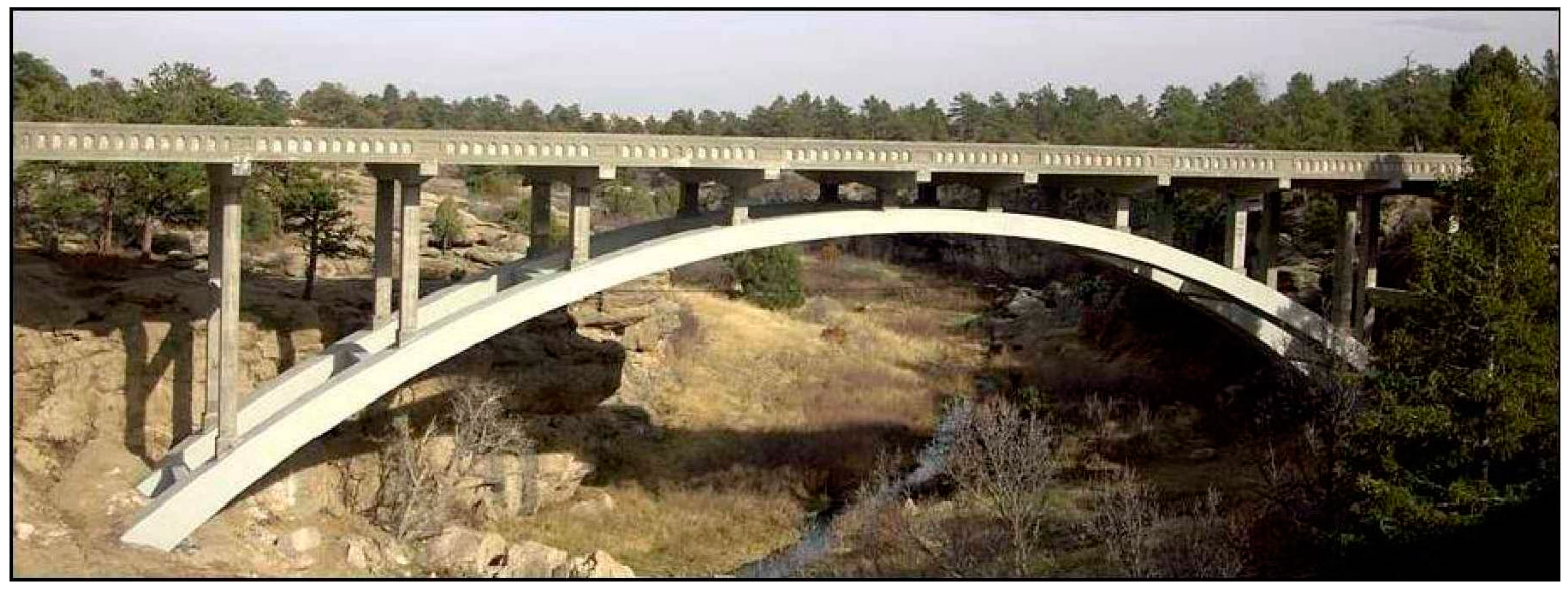



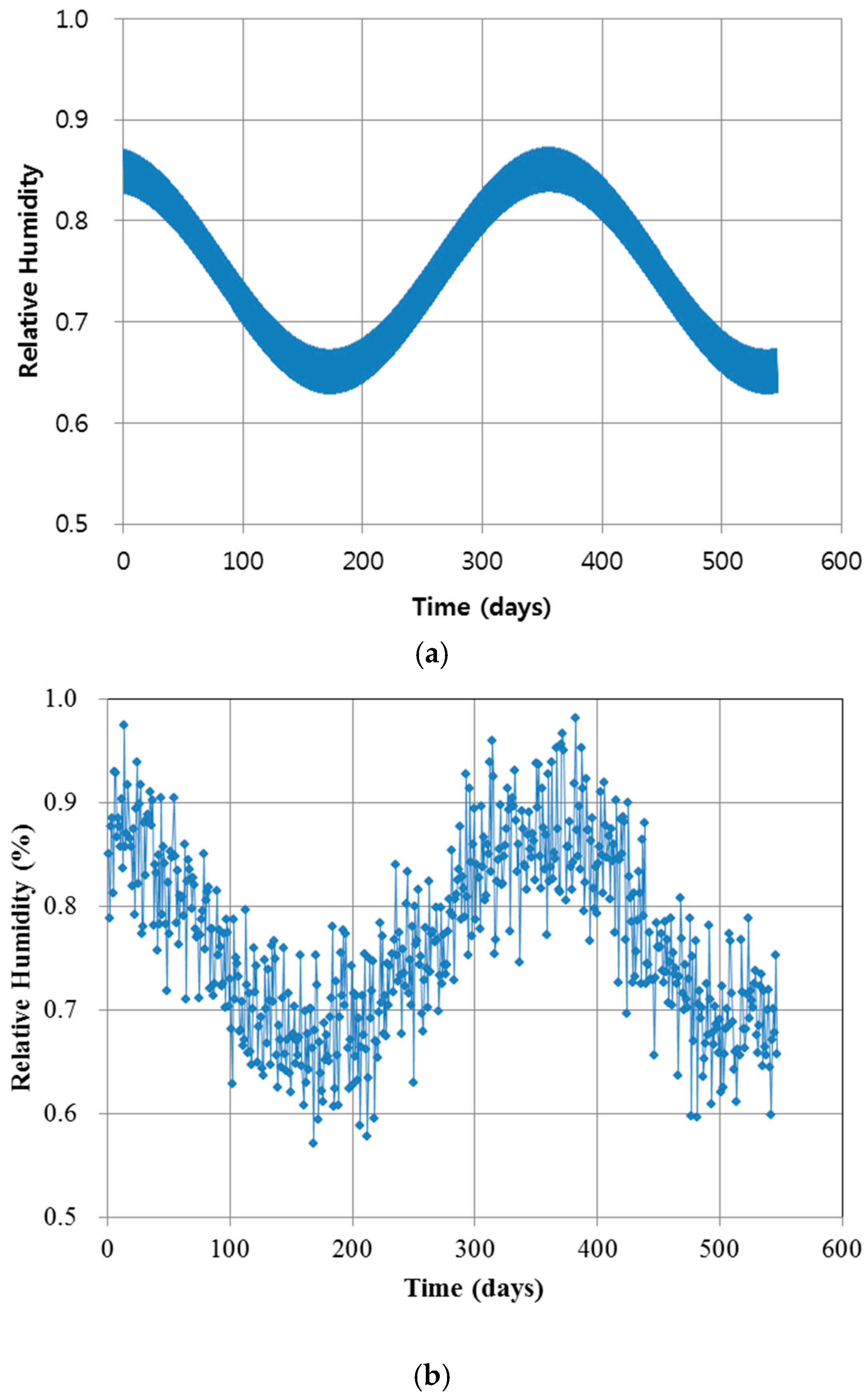
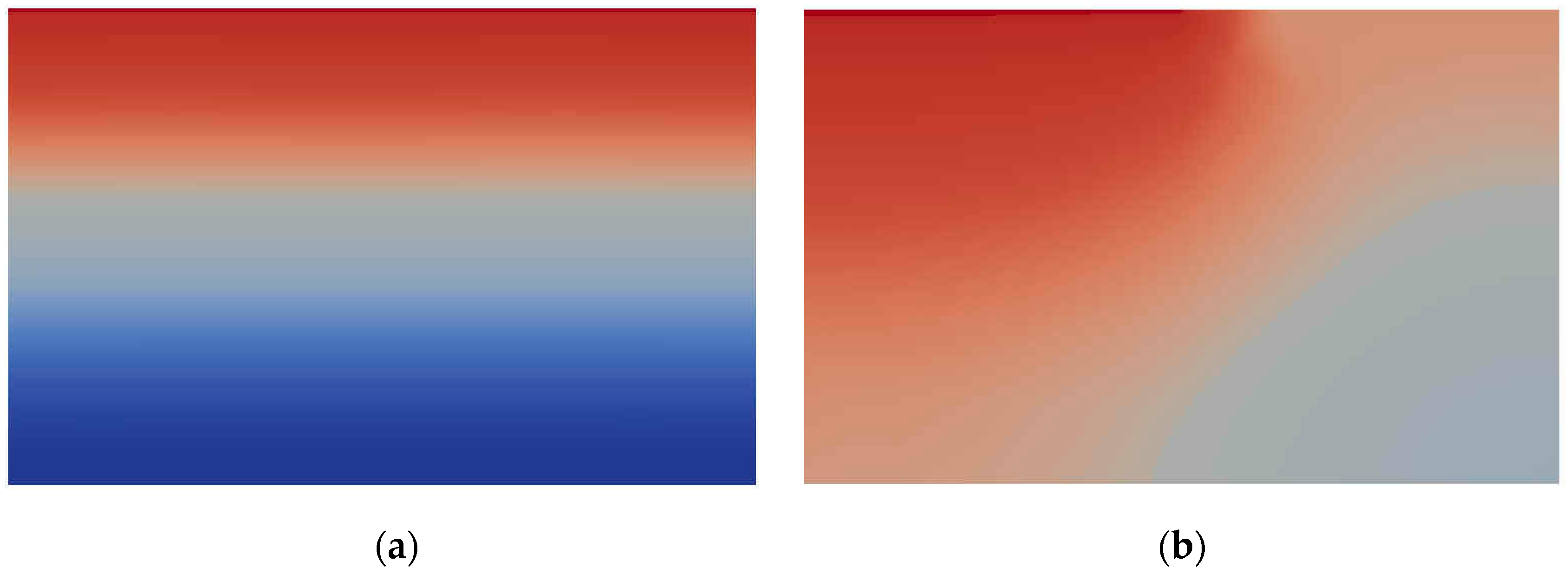
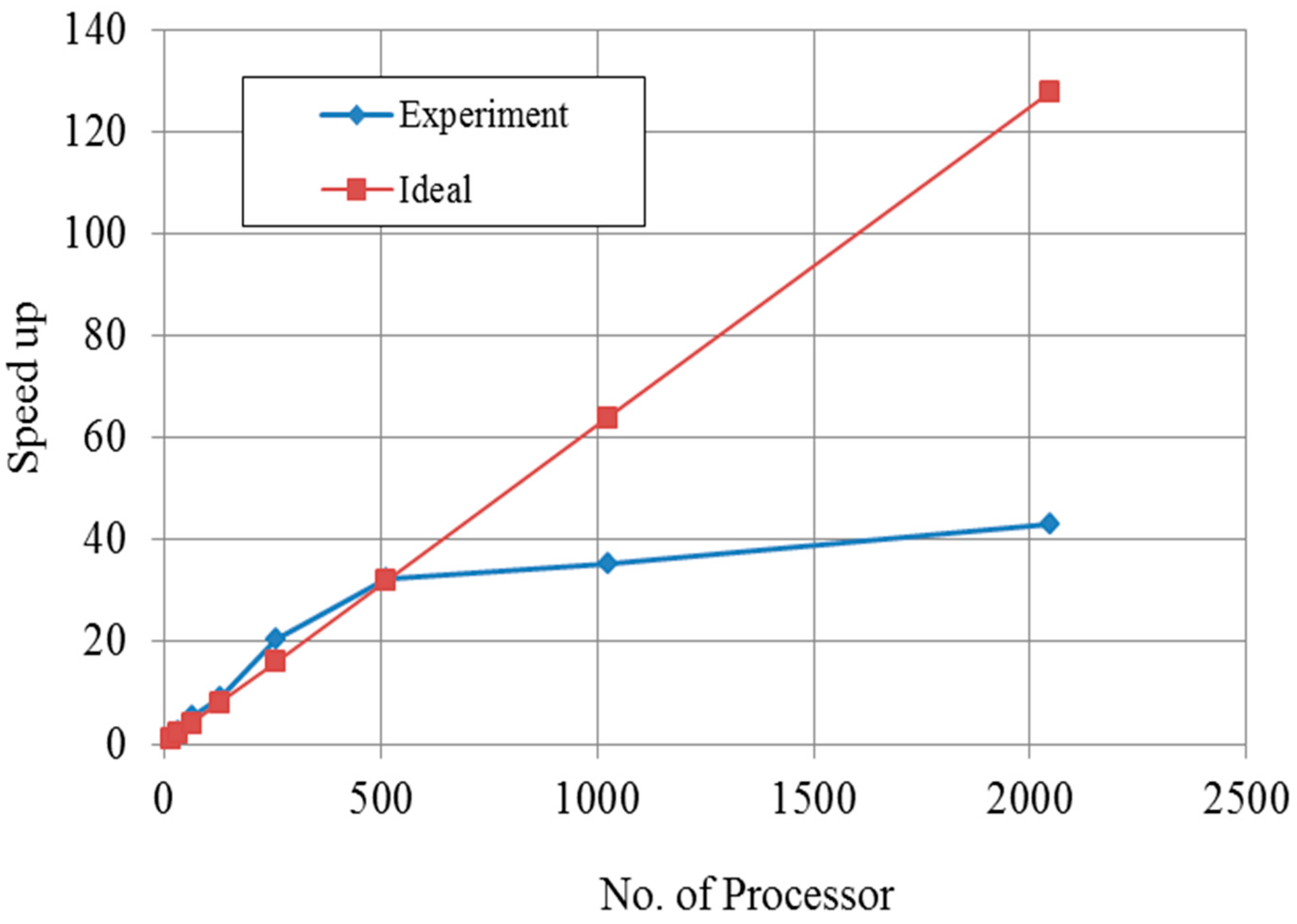
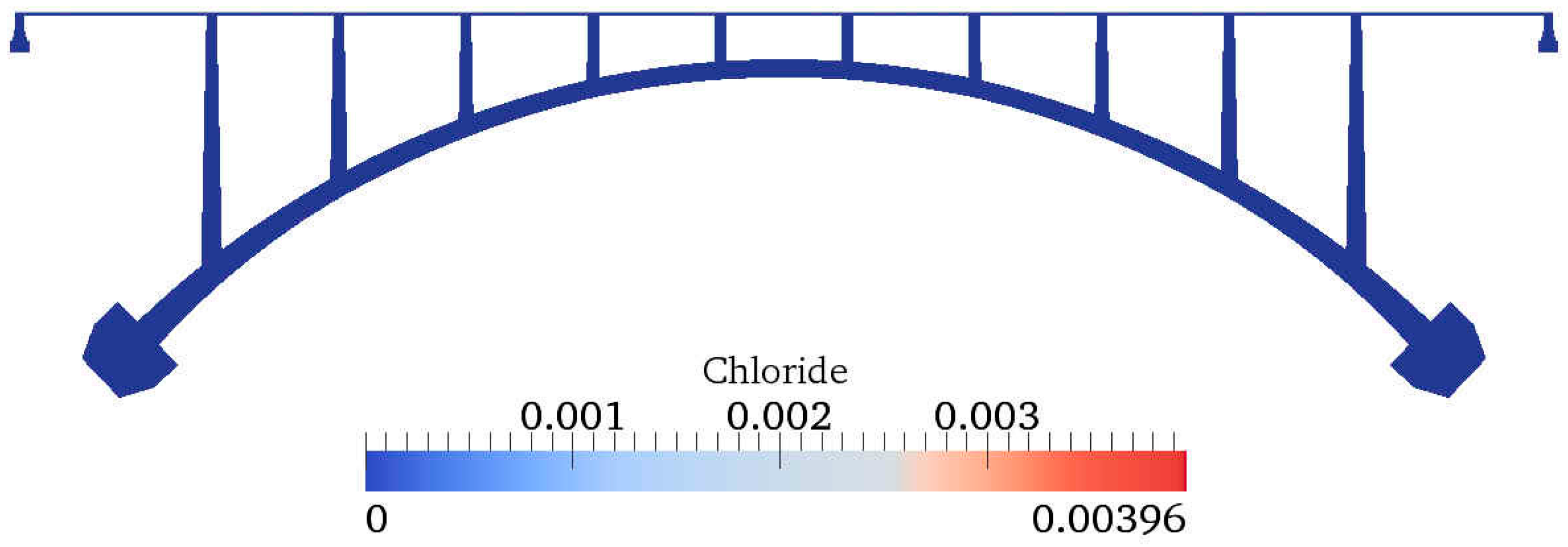
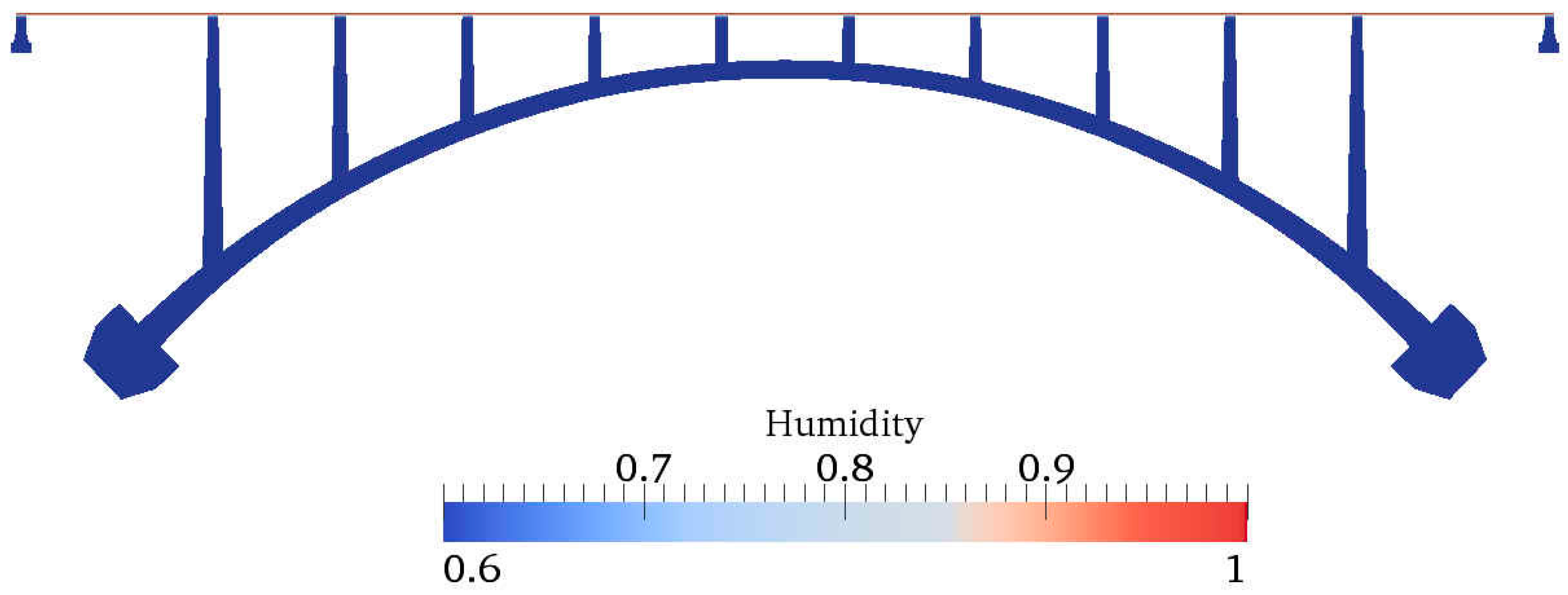
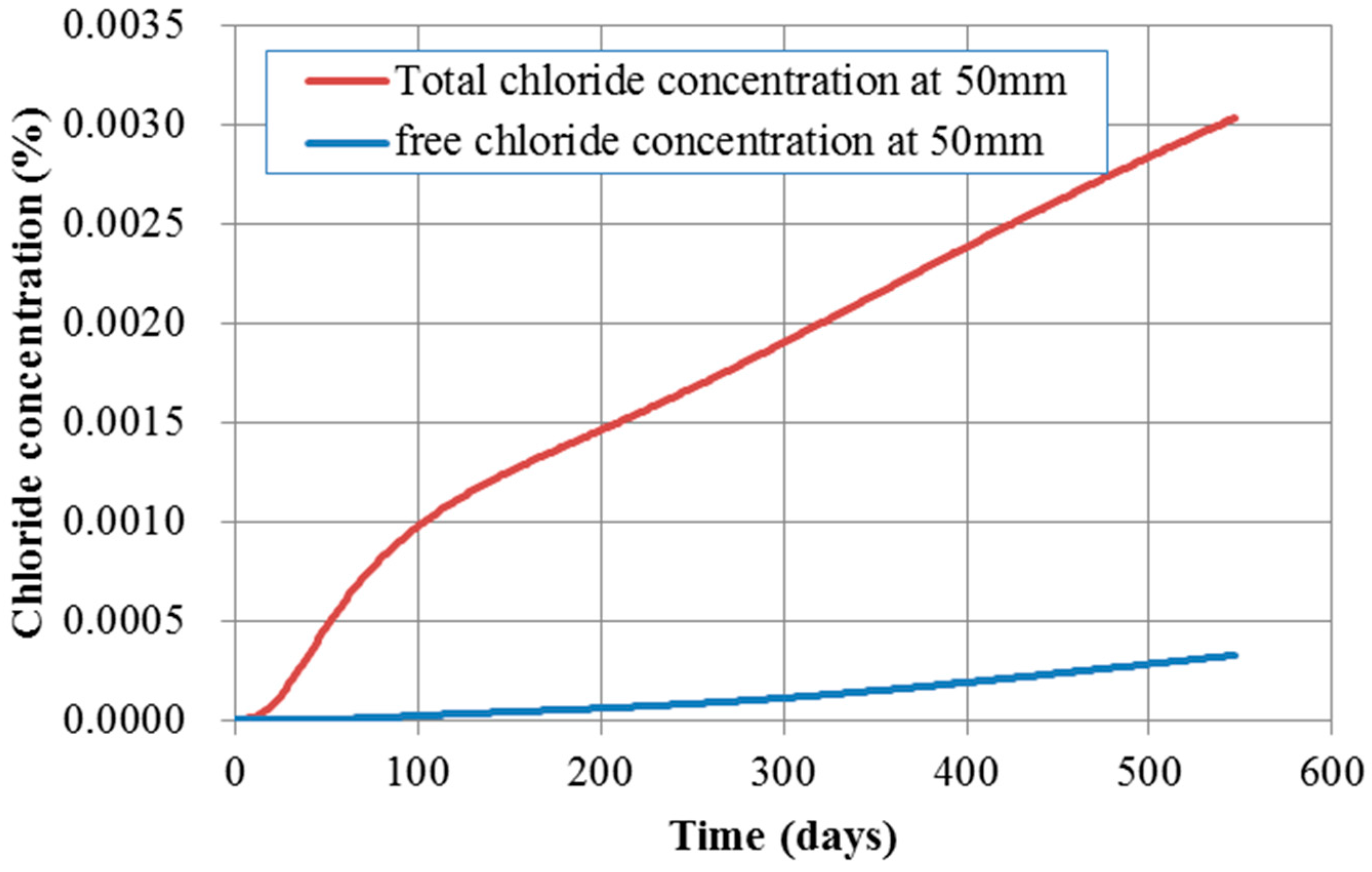
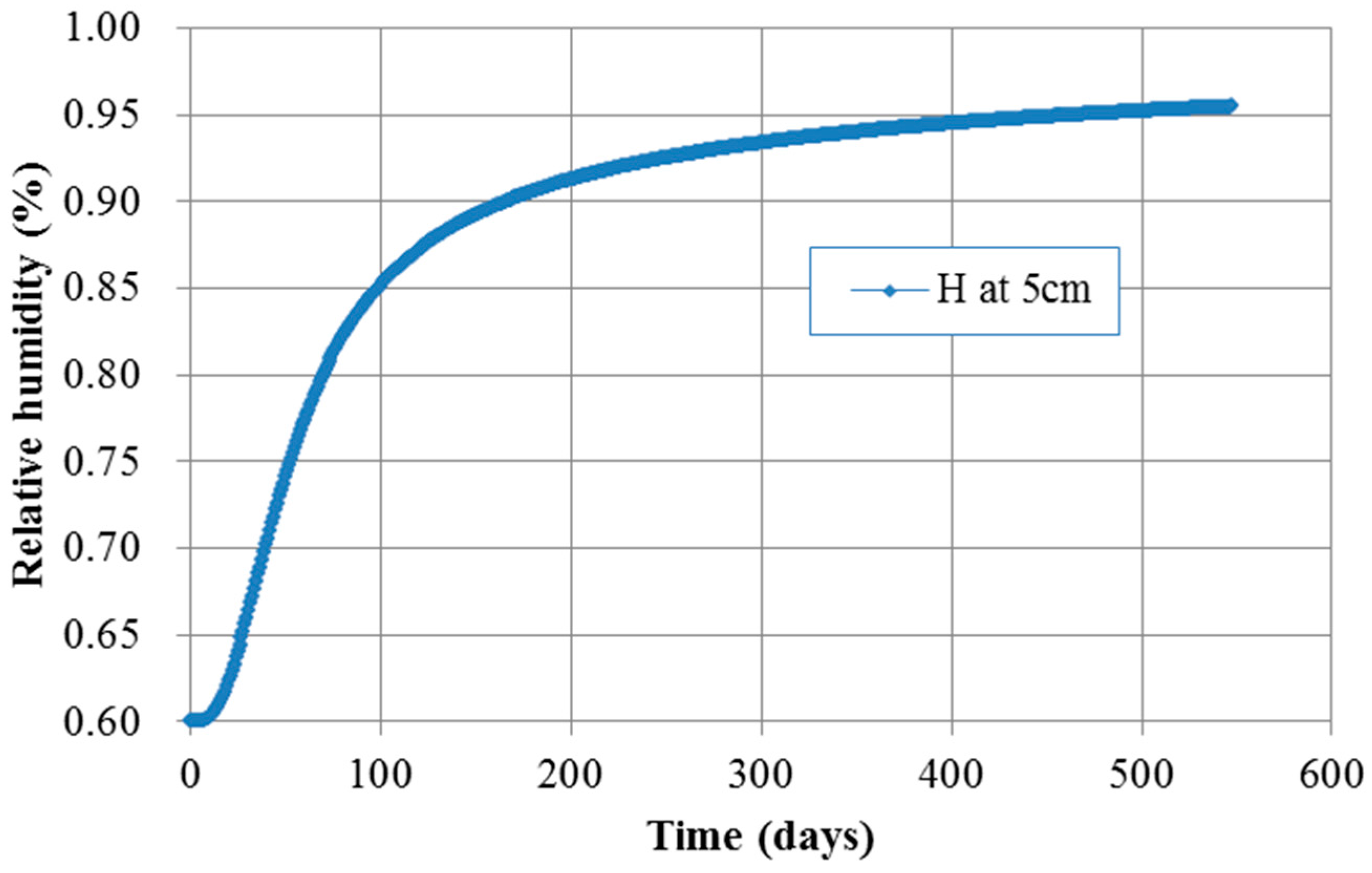
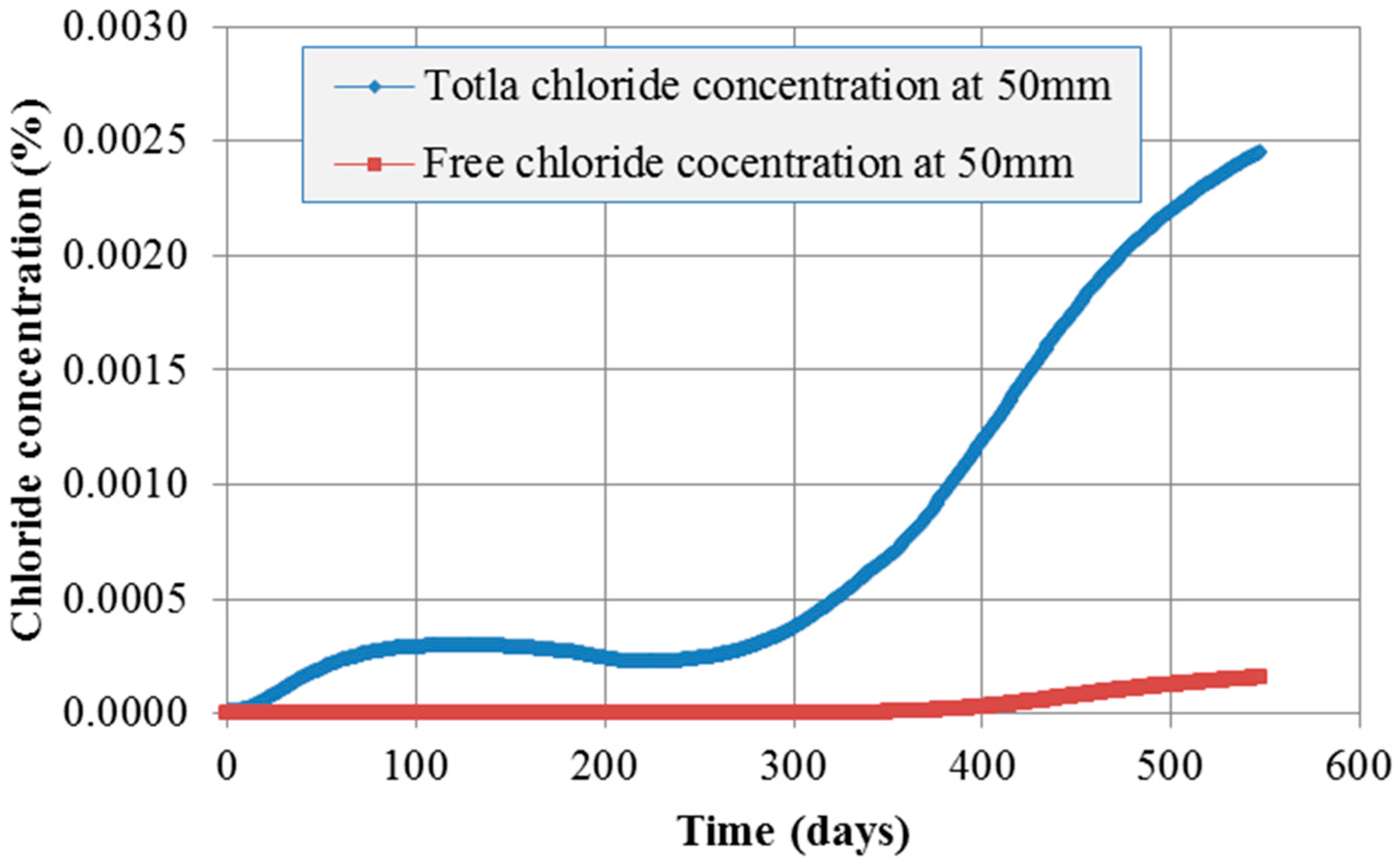
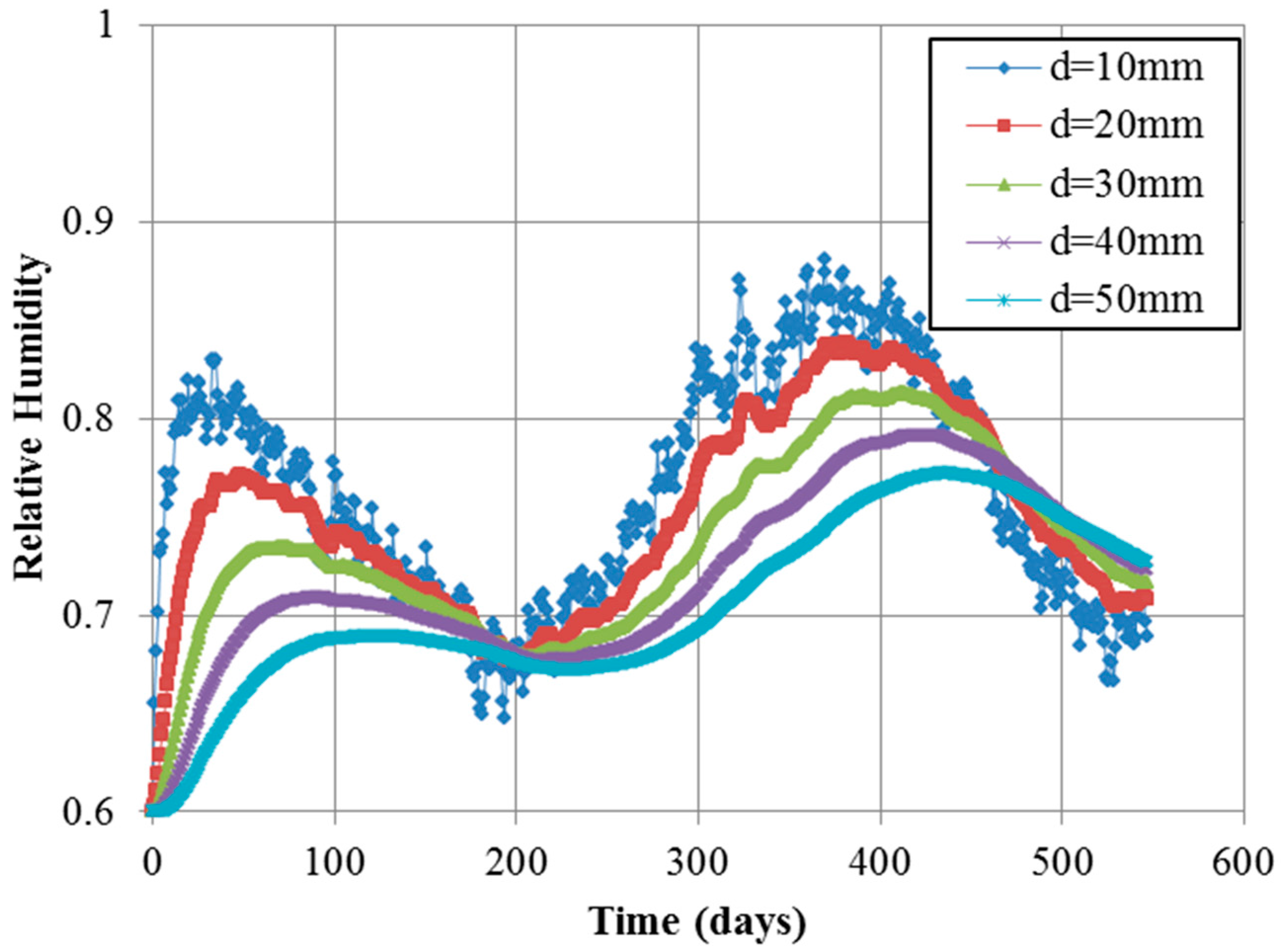
© 2017 by the authors. Licensee MDPI, Basel, Switzerland. This article is an open access article distributed under the terms and conditions of the Creative Commons Attribution (CC BY) license (http://creativecommons.org/licenses/by/4.0/).
Share and Cite
Na, O.; Cai, X.-C.; Xi, Y. Corrosion Prediction with Parallel Finite Element Modeling for Coupled Hygro-Chemo Transport into Concrete under Chloride-Rich Environment. Materials 2017, 10, 350. https://doi.org/10.3390/ma10040350
Na O, Cai X-C, Xi Y. Corrosion Prediction with Parallel Finite Element Modeling for Coupled Hygro-Chemo Transport into Concrete under Chloride-Rich Environment. Materials. 2017; 10(4):350. https://doi.org/10.3390/ma10040350
Chicago/Turabian StyleNa, Okpin, Xiao-Chuan Cai, and Yunping Xi. 2017. "Corrosion Prediction with Parallel Finite Element Modeling for Coupled Hygro-Chemo Transport into Concrete under Chloride-Rich Environment" Materials 10, no. 4: 350. https://doi.org/10.3390/ma10040350




